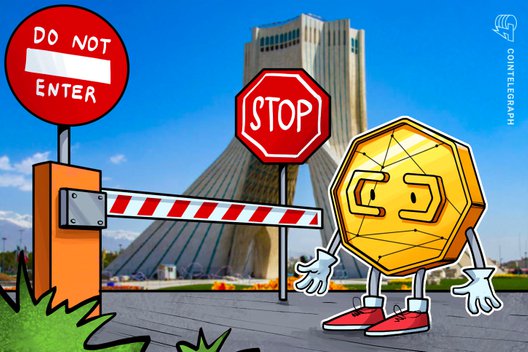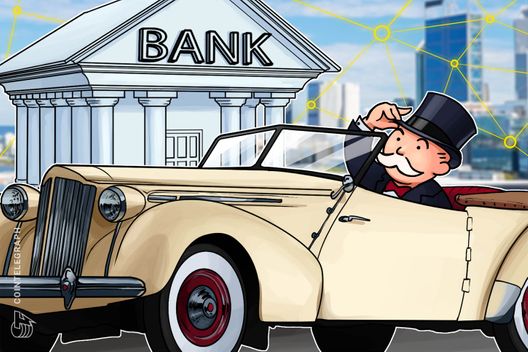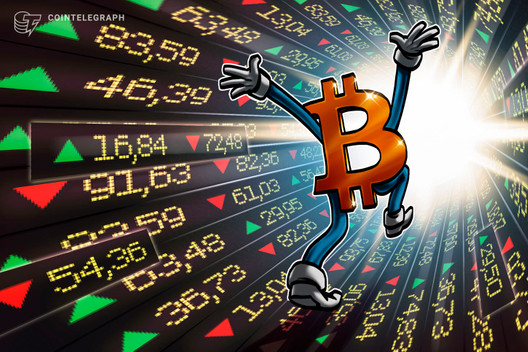As the Bitcoin halving draws ever nearer, the demand for the digital asset keeps soaring, having seen an increase of around 15% against the United States dollar in the past month. The Bitcoin halving is predicted to take place during May 2020 and will see Bitcoin’s issuance rate decrease from 12.5 to 6.25 BTC every block or around every 10 minutes. As time goes on, Bitcoin’s scarcity and high stock to flow rate continue to make it an increasingly attractive asset for investors.
As Bitcoin’s journey toward the mainstream continues to push forward, it is important to attempt to find out how the world sees the first cryptocurrency. With this in mind, here are some very important questions to ask: What is Bitcoin? Is it a currency? A form of money? A store of value? All of the above or none of the above? Perhaps something completely new?
Pick a side
Some defend Bitcoin as a superior store of value due to its scarcity, unforgeability and safe haven properties. In a recent blog post, Coinbase cited these characteristics and more to make its case that Bitcoin rivals gold as the ultimate store of value in the digital age,.
While the analysis is a valid one, others would say it is overshadowed by Bitcoin’s true goal, which is to be used as a decentralized payment method, or in Satoshi’s words, “a peer-to-peer electronic cash system.”
Bitcoin’s decentralized properties provide a predictable issuance rate while being theoretically immune to government intervention both in its monetary policy and transaction processing, allowing for cheap, fast and censorless transfers worldwide.
While its peer-to-peer nature grants Bitcoin immunity from human intervention (albeit a 51% attack), it also comes with some limitations in terms of usability, which can be cited to further cement Bitcoin’s position as more of a store of value like gold and less of a virtual currency for day-to-day use.
Store of value vs. currency vs. money
What makes something like gold a store of value and what makes something like the U.S. Dollar a currency? To put it simply, a store of value is an asset that can maintain its value without depreciating over time, including precious metals like gold or silver and interest-bearing assets like bonds. In contrast, currency has no inherent value. It is a unit of measure and a widely used medium of exchange that has no intrinsic value in and of itself. Currency is a representation of money and its value is always relative to the money it represents.
Unlike currency, money has an intrinsic value and cannot be created at will. Currency can be seen as a receipt for money or for commodities. When the gold standard was in vigor, people could cash their bank notes for gold. Once the gold standard was removed from the equation, the U.S. dollar started to lose value continuously as new notes were printed, diluting the value of all the notes in circulation. This means that the U.S. dollar has relative value rather than intrinsic value. With something like gold or Bitcoin, the creation of more units (via mining) does not dilute the value of the remaining units because they have intrinsic value.
While some currencies have been pegged to precious metals in the past or other stronger national currencies in the present, most currencies do not have an underlying asset and derive their value only from their wide acceptance and from the stability of the government and economy that stands behind it.
Despite its well known classification as a “cryptocurrency,” Bitcoin cannot be a currency because it has intrinsic value. While some would argue against it, the resources spent to issue new units ensure that, unlike fiat currency, Bitcoins cannot be created out of thin air. In other words, mining Bitcoin has a tangible cost and, interestingly enough, this cost is not only used to create new units, it also ensures Bitcoin’s functionality and reliability as a decentralized ledger and international payment system.
Being a store of value is a mandatory feature of money, and although the two concepts are not interchangeable, a precious metal like gold could be considered money, as it obeys most of the key requirements such as being divisible, durable and portable — much like Bitcoin. However, gold lacks one of the most important factors of being classed as money, which is to be generally accepted as payment for goods and services. So, what about Bitcoin?
Bitcoin as money
While Bitcoin has proven to be a store of value by definition, is it really money? There are six key features that define money: durability, portability, divisibility, uniformity, limited supply and general acceptability as a payment method.
While Bitcoin obeys the first five rules, it is not a generally accepted payment method. Yes, it is possible to pay for goods and services with Bitcoin both online and offline, but it is only accepted by a minority of merchants. Although some big players like Microsoft and Overstock already accept Bitcoin as payment for some of their services and even some governments accept it for tax payments, the token is far from being “generally accepted” when compared to a national currency like the U.S. dollar. So, much like gold, Bitcoin is, in practice, not money. The question here is, can Bitcoin become money?
Can Bitcoin become money? Problems and limitations
While Bitcoin can, in theory, become money if it becomes widely used, it has various technical limitations that would render it impractical as money in its current form. Cointelegraph spoke with Antoni Trenchev, CEO of crypto banking app Nexo, to weigh up Bitcoin as a store of value and its potential as money. Trenchev cited Bitcoin’s complicated nature as one of its main limitations:
“It’s still a bit geeky and uncomfortable to use. It doesn’t come naturally to make a payment as it does with your credit card for example. A lot of companies, including Nexo, are working on that but it’s still a very complicated product to use.”
While using Bitcoin can seem fairly simple to a certain demographic, it’s still a very niche product and can also become expensive to use in certain situations. A standard Bitcoin transaction can cost from $0.02 to $0.10, which is quite cheap when transferring money abroad, for example, but can amount to a lot when used for small transfers and payments.
Moreover, the fees vary according to the amount of transactions happening on the network. Transactions are grouped into blocks, and when the block is full, the leftover transactions must wait for the next block. This characteristic can cause serious congestion issues and creates what is known as a “fee market,” where those who are willing to pay higher fees receive preferential treatment, leaving transactions with lower fees relegated to future blocks.
Network congestion was at an all-time-high during Bitcoin’s bull run in 2017. It was barely unusable for normal transfers and payments, with fees reaching the $50 mark and some transactions taking hours or even days to confirm.
Related: Can Blockchain Survive Mass Adoption? Future Perils Disclosed
Since then, improvements like SegWit have ramped up Bitcoin’s capacity. Data from Blockchain.com shows that transactions per second are at an all-time-high of 3.8 transactions per block since December’s 4.7 mark, with no signs of congestion so far. Regardless, this says very little for Bitcoin as a mainstream form of money, as payment systems like Visa can theoretically handle 24,000 transactions per second.
Bitcoin vs. gold: The new store of value for the digital age
While solutions like the lightning network are looking to fix the aforementioned issues in Bitcoin, providing a second-layer network where microtransactions can take place for lower fees without clogging up Bitcoin’s original network, they are far from being at a production level.
Despite this, Antoni, who previously predicted Bitcoin to reach the $50,000 mark by 2020, remains bullish even if Bitcoin fails to reach mass use as a form of money. He told Cointelegraph:
“The very early narrative was that Bitcoin was going to be a revolutionary currency and p2p payment system. I think that this has failed to materialize in any way. Bitcoin has the functionalities of a currency but it’s used more as a store of value and transition of value especially in larger quantities.”
Vytautas Karalevičius, CEO of crypto-based bank Bankera, on the other hand, believes that Bitcoin will reach the status of widely accepted money and that it is only a matter of time until that happens:
“Bitcoin solely cannot fail, the question is how long it will take for technology (hardware such as hard drives, broadband) to improve to allow Bitcoin scale and work as a widely accepted payment method.”
Even if these technical solutions do not work exactly as planned, the future still seems bright for Bitcoin as a reliable store of value whose scarcity and high stock-to-flow ratio make it a very attractive investment and a great hedge against current political and economic instability. “The macro geopolitical reality is such that I cannot imagine a scenario that would not be good for Bitcoin in the short or long run,” said Antoni.
High inflation rates and aggressive monetary policies have historically driven demand for gold, and the same can be said for Bitcoin, which continues to prove itself resistant to government intervention despite multiple attempts.
How Bitcoin is used
While Bitcoin’s limitations as money are currently undeniable, overcoming these technical limitations would certainly bring an unimaginable advantages especially in countries with aggressive monetary policies and a high proportion of the population unbanked. Demand for the digital asset in countries where hyperinflation rules, like Venezuela, continues to soar.
Moreover, it has also become a popular way to escape aggressive capital flight control policies in countries such as China. Vytautas Karalevicius believes there would be a massive upside to the widespread use and acceptance of Bitcoin. He told Cointelgraph:
“It would enable freedom of payment as a form of freedom of expression to eliminate any potential censorship or restrictions of payments. While censorship sometimes might act for the benefit of society, elimination of possibility to censor payments would have to change many things how society operates today, i.e. new ways to fight bad actors will have to be found.”
Bitcoin may or may not be a widely used form of money in the future, but its advantages as a store of value and safe haven against fast-depreciating currencies are undeniable. Much like gold before it, economic volatility and inflation drive the demand for Bitcoin. With the launch of the first regulated derivatives for Bitcoin, institutional demand soared and even retirement funds are adding Bitcoin to their portfolios.
Moreover, retail demand is following the same trend as retail-oriented exchanges open up derivatives trading to a wider audience. The desire to hold Bitcoin and other cryptocurrencies as a hedge or store of value can also be observed in the fast-growing popularity of DeFi protocols that provide passive income for cryptocurrency holders.
Despite what Bitcoin was created for, the way it is used and its real-life performance will decide what it is and what it becomes. Bitcoin’s use has been mainly speculatory, with the value transferred on the network every day just a small fraction of its trading volume. While some have looked at this data to condemn Bitcoin for being a bubble, it can also be argued that Bitcoin currently has an important role besides being a store of value or money — opening up the doors of investment to a wider audience. This has been true for concepts like initial coin offerings or initial exchange offerings, which have lowered the entry barrier for crowdfunding and equity investment.
More than a currency or asset
While one can argue over Bitcoin’s current and future definitions, one thing seems to be universally agreed upon: Bitcoin’s decentralized ledger technology, the blockchain, is here to stay, with applications already falling outside of the realm of money, such as smart contract platforms that allow for decentralized contracts and applications.
When asked about the applications for smart contracts and decentralized applications, Sergio Susko, director of business development and partnerships at DappRadar, told Cointelegraph: “There are really a lot, and those cater to various user appetites. At DappRadar we group dapps into various categories, like Games, Exchanges, DeFi, Collectables, Gambling, etc.”
Although the concept of DApps and smart contracts is even more complicated to grasp than Bitcoin itself, Sergio believes that the advantages that can be brought about by these new concepts are enough to sustain their future adoption by a mainstream user base:
“As with any new, groundbreaking technology, there is a strong need for a wide use case and subsequently mass adoption. Blockchain, smart contracts, and dapps are at the very beginning and you can compare it to a newborn baby. However, in the modern world, the understanding and adoption of technologies is a rather fast process. As soon as there is a clear, usually financial, benefit, that is seen by the user — it gets adopted pretty fast, even without a knowledge of how the tech works.”
As the Greek philosopher Plato said, “necessity is the mother of invention,” and while it is hard to say how this invention will look or be used in the future, Bitcoin and its underlying technology were born from a clear need for change in the financial landscape. Until that change comes, projects like Bitcoin will continue to grow in relevance.









